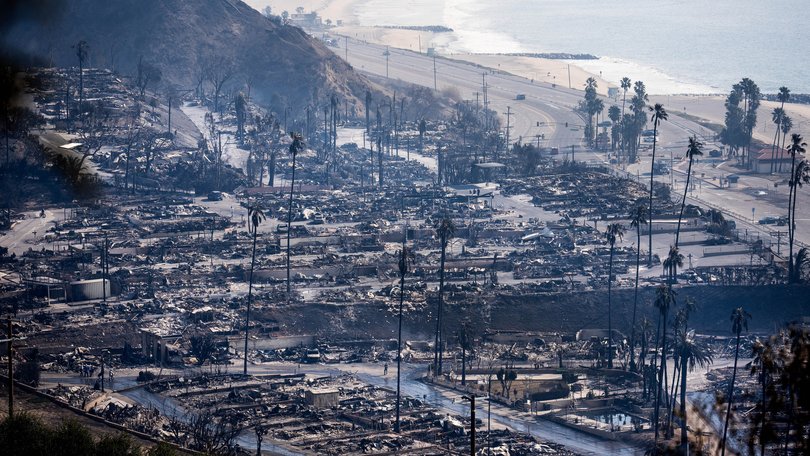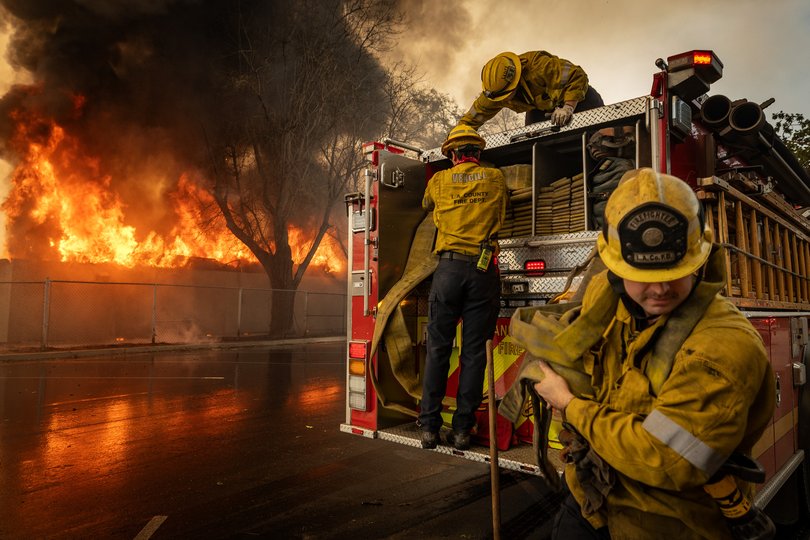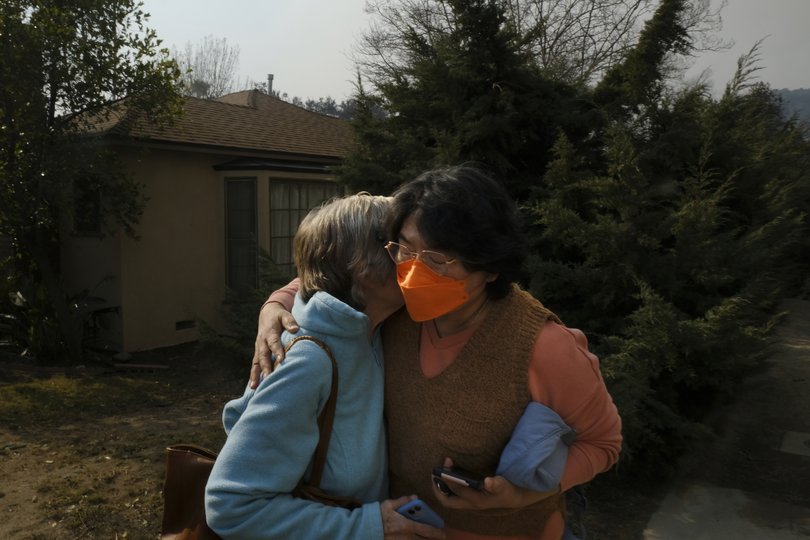THE WASHINGTON POST: Even after LA’s wildfires burn out, toxic threats will linger

As people in Los Angeles return to their devastated neighbourhoods, now marked with burn scars and ruins, toxic hazards will persist long after the fires have been put out and the smoke has settled.
Since last Tuesday, more than 40,000 acres have burned in five different fires, killing at least 24. The blazes have reduced homes, cars and power lines to ash, releasing toxic chemicals into the air that will eventually settle onto the soil.
“There definitely is a large possibility that you will have lingering health effects from these wildfire smoke events,” said Jesse Berman, associate professor of environmental health sciences at the University of Minnesota’s school of public health.
Sign up to The Nightly's newsletters.
Get the first look at the digital newspaper, curated daily stories and breaking headlines delivered to your inbox.
By continuing you agree to our Terms and Privacy Policy.Lead pipes and fireproofing are often found in the Los Angeles area’s older houses. When burned, these materials release their poisons into the air, where they’ll pose long-term risks to residents who return to their homes, experts said.
Ash that settles in homes after a fire can be supercharged by the burned metals, electronics and furniture, creating “toxic ash,” said Rima Habre, associate professor of environmental health and spatial sciences at the University of Southern California.
“The ash itself contains a lot more toxic chemicals than if it was just a forest burning,” Habre said.
Like thousands of other Los Angeles residents who have been threatened by fires over the past week, Pawla Velosa and their family were forced to grab what they could and leave their home behind as fast-moving flames engulfed their neighbourhood.
Velosa watched the carnage from their Ring camera, praying that their house near Eaton Canyon would be spared. Unlike many other homes in the Altadena and Pasadena neighbourhoods, their house survived.
When they returned home, the air hung heavy with the stench of smoke. The sliding door facing the backyard, their clothes and other surfaces were littered with dark particles: soot, a black powdery particulate laced with cancer-causing chemicals.
Wildfires expose people to particulates like soot, and larger particles like ash, which can cause a range of adverse health effects. Soot and other fine particles, known as PM2.5, can penetrate deep into the lungs and enter the bloodstream, causing asthma, heart disease and thousands of premature deaths each year.
Sifting through burned structures can stir soot and other particles back into the air, causing further risk of inhalation.
Smoke and ash can also creep through openings or through vents into homes that didn’t burn down. The smell of smoke that lingers in homes after wildfires results from volatile organic compounds, toxics that pollute indoor air quality, experts said. VOCs in wildfires can include hazardous, cancer-causing chemicals such as benzene, toluene and ethylbenzene.
In the home, particles can settle on the ground or on the walls, while VOCs can be absorbed by any surface like furniture, Habre said.
“They tend to stay there and get remitted into the air when it’s a little bit warmer and then they go back and stick into surfaces or particles,” Habre said. VOCs are “in general more toxic than particles,” she added.

VOCs are “trickier,” because they stick to surfaces and aren’t filtered through air filters, Habre said. Without proper surface cleaning - washing surfaces and linens with non-fragranced soap and water - the compounds can loft back into the air.
A protective layer of clothes, including long sleeves, goggles, gloves and masks, creates enough distance between your skin and the particles to avoid direct contact, Berman said. Still, vulnerable groups including pregnant people, children, older people and those with preexisting conditions should not participate in cleanup activities because exposure can exacerbate conditions and create health risks.
Extended dry periods, like the one Southern California is experiencing, can also keep harmful chemicals stagnant and cause dust and other particles to be picked up in the wind, Berman said.
“Until there is that kind of rainfall, which really can wash things out and clean the atmosphere, you are going to have that concern that these hazards can linger in the environment perhaps longer than we would like,” Berman said.
But some experts say that when the rains do come, ash can contaminate storm drains and water systems if introduced.
With the first rainstorm, said Thomas Borch, an environmental chemistry professor at Colorado State University in Fort Collins, the residue could slide down the slippery, burn-scarred hills of Los Angeles into streams and eventually reservoirs.
Water contamination can also be introduced through damage to the drinking water infrastructure - such as via broken pipes - introducing waste and soil contamination directly into the system. And flames from wildfires can weaken or melt plastic pipes, causing chemicals from the plastic to leach into the water supply.
Wildfires can also deplete water supplies as firefighters increase their water use. And as firefighters struggled to find working hydrants, the lack of water supply also had implications for water quality. Low water pressure and backflows introduce microbes and bacterial contamination, Habre said.
“Water quality in general is a concern for drinking. You shouldn’t be drinking the water,” Habre said. Boiling water primarily helps kill microbes, but does not remove all chemicals of concern. Smoke, ash and flame suppressants filled with “nasty chemicals” can settle into water reservoirs and seep into the groundwater, Habre added.

Even efforts to treat contaminants could have adverse effects, said Borch. Chlorinating water that contains excess organic matter runs the risk of forming harmful disinfection by-products.
It remains unclear whether the Los Angeles fires will have long-lasting effects on soil quality. Research conducted after the 2021 Marshall Fire in Colorado showed minimal long-term effects on the sediment. But experts said that could be because the contaminated ash quickly dissipated after the fire, either carried on the wind or washed away by a rainstorm.
But structural wildfires, or wildfires that spread through densely populated areas, burning not just brush and trees but also homes, cars and infrastructure, are an increasingly common phenomenon with health hazards that still need to be studied.
“We just don’t know enough,” Borch said.
© 2025 , The Washington Post
